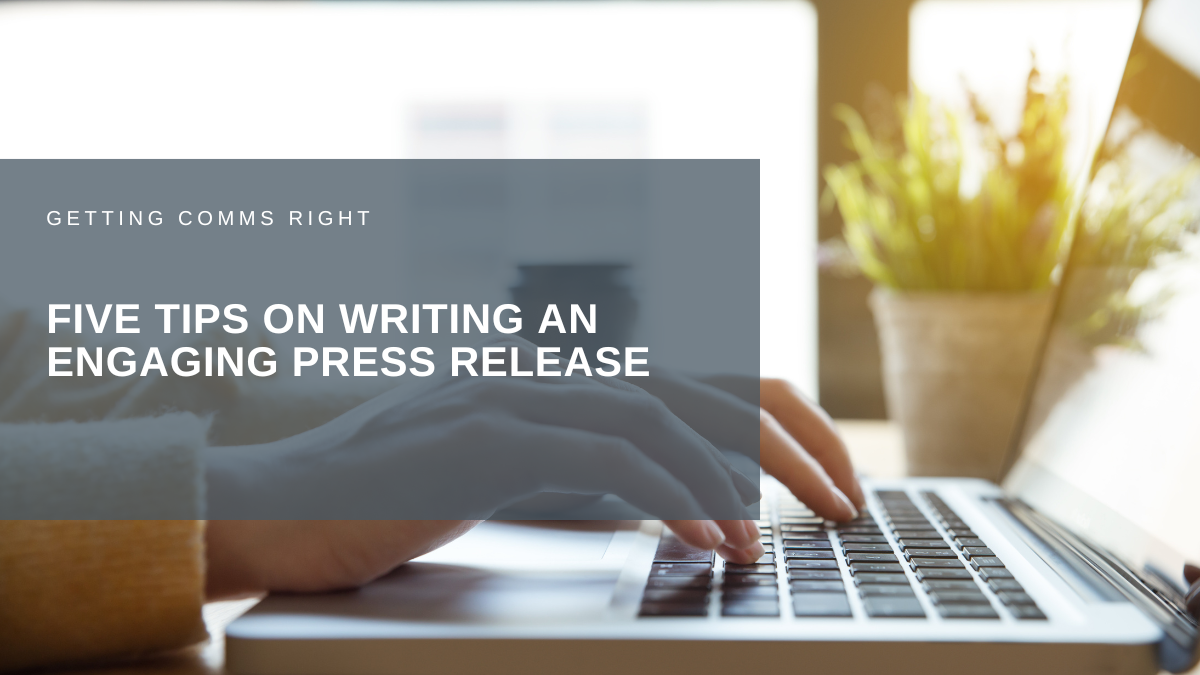Getting Comms Right
5 tips on how to write a press release

In the digital age, press releases are often thought of as a much-maligned element of PR. There is an array of fresh new options in which to garner attention for your client as social media continues to develop, however, issuing a press release remains one of the most effective tools a PR consultancy can use to secure coverage.
As a former journalist myself, I have seen some of the best and worst examples of press releases and learnt from them. Since moving into the world of PR, this knowledge has been invaluable and allowed me to produce the type of content that will engage journalists.
#1 The 5 Ws
Now this might sound obvious, but it can often be forgotten. The very first thing you need to make sure your press release includes (in the first paragraph no less) is ‘who, what, where, when and why’. These details are the basis of the story, and the first thing recipients will want to know.
During my time as a journalist, it was not uncommon to get to the end of a press release and find the most important elements buried at the very bottom. Avoid this at all costs, as not everyone will read the release in its entirety.
#2 The headline sells the whole story
No matter how well written and engaging your story might be, the reality is most journalists won’t go through the trouble of reading it if you don’t sell them on the headline. The key purpose of a headline should be to engage the recipient, and in a world where the average attention span is ever shortening, this can be easier said than done. A good practice is to take a look at the headlines of articles of your target publications and craft your own headline in a similar fashion.
Far too often in my career as a journalist, I saw headlines making biased, unrealistic and sometimes even outright untrue statements to try to sell their brand or product. A good, eye-catching headline is punchy, provokes intrigue and will avoid using too many words. On that note, words and phrases such as ‘innovative’, ‘cutting-edge’ and ‘exciting’ are overplayed and outdated, so try to get creative with your vocabulary. Perhaps most importantly of all, your headline must feature the most important and newsworthy element of the press release.
#3 Think like a journalist
When distributing press releases, remember that journalists are your best friends, so aim to make life as easy for them as possible. You need them to give you the coverage you seek, and therefore you are best served in tailoring your content to make it more accessible to them.
It’s also important that press releases are written starting with the most important detail, and finishing with the least. You’re not writing a novel here, there is no need to set the scene. By ensuring details are included in order of importance you can make life easier for journalists as the copy can be quickly turned around – which is extremely useful on a busy press day. Remember to also include a small number of good quality and high-resolution (at least 1MB but not so large to create difficulties with opening or sharing) images in an easy-to-access format.
#4 Be honest and unbiased
Go easy on the superlatives. No matter how many times you slip into a press release that the particular brand or product is the ‘best of its kind’, it won’t be included in any eventual coverage. Instead, focus on where exactly your product or service provides something no one else does, or can solve persistent problems in whatever industry you are targeting. As a rule, include more facts and less hyperbole.
#5 Quotes are there to add colour
Quotes add a human element to press releases, so don’t be afraid to show a little character. This is where you can add some opinion or slightly stronger wording, and solid quotes can really make a press release stand out in the pile.
It’s also important to ensure the quote is attributed to someone – remember this is the human element, and there is nothing human about ‘a spokesperson said’.